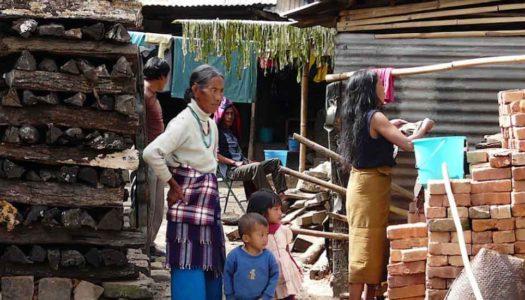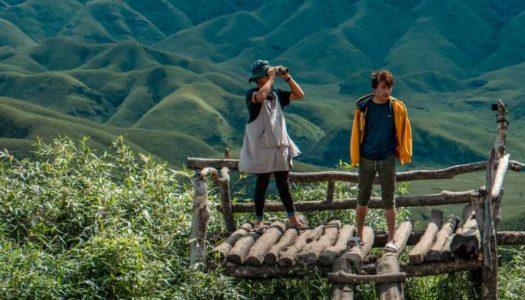Nestled in the state of Nagaland, Khonoma Village is straight out of your dreams! With lush green mountains and the sweetest locals, Khonoma is a destination to be. The essence of living amidst mountain ranges and breathing fresh air is certain to beat all other experiences. As you dive into its beauty, you are likely to experience heavenly bliss.
Khonoma Village is one of the unexplored places to visit in India due to less commercialization here. Right from homestays and sustainable lifestyles, people in Khonoma are living in an absolutely different world. You are likely to witness different cooking and agricultural practices that differ from other parts of India.
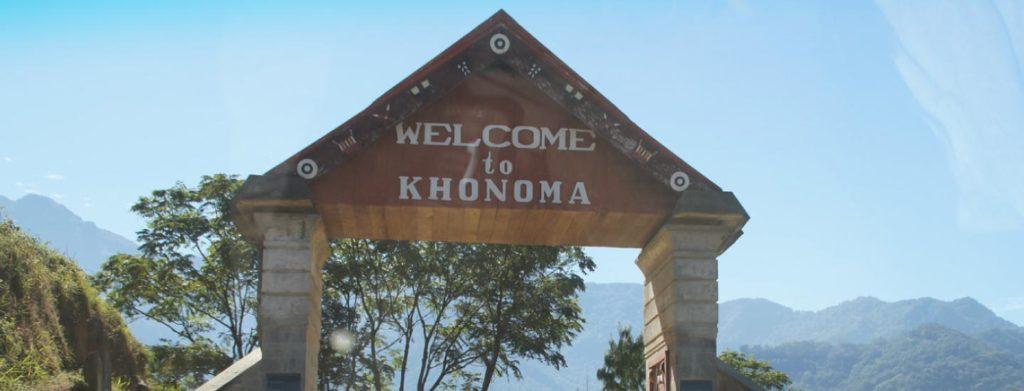
Now that you have decided to experience the best of Khonoma tourism, it is super important to get all the details in hand. The region is dominated by the Angami Naga tribe so you are right now stepping into Tribal tourism which is one of the interesting things to do. You may also check Treebo hotels as the journey requires a few stops before the final destination. As you get ready for a thrilling yet earthy experience, here is your perfect travel guide for Khonoma.
Best Places To Visit in Khonoma Village
1. G H Damant Tomb Monument
Khonoma has witnessed the historic Kohima World War 2 where the village played an important role too. You can find war memorials in every nook and corner of the village. One of the famous war memorials is the G H Damant Tomb Monument. It is an important location considering its history as well as archaeology.
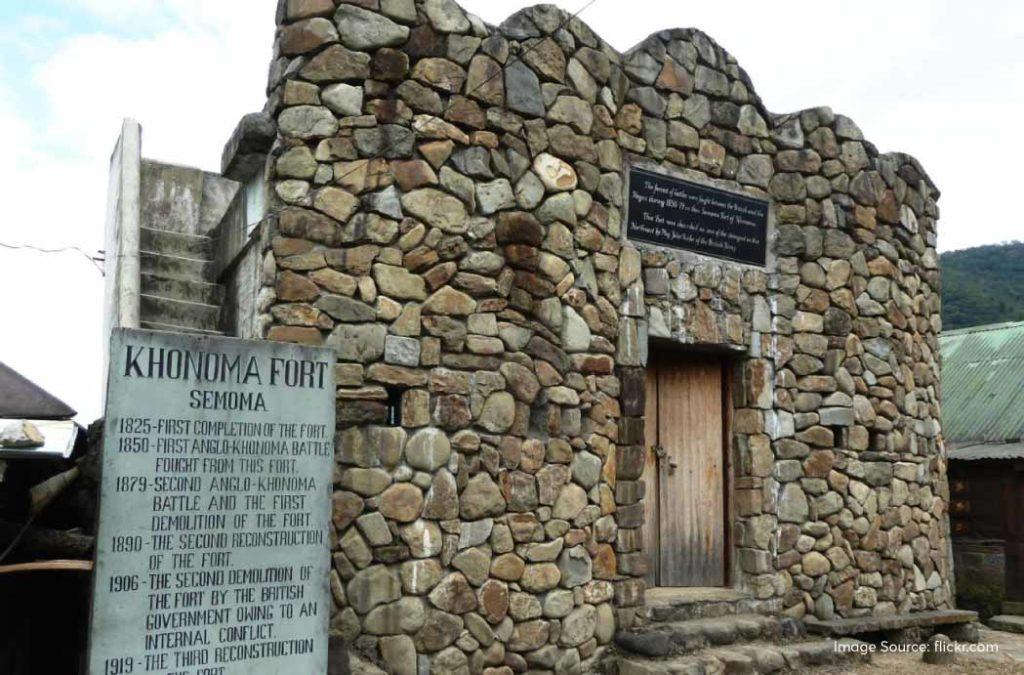
G H Damant was the political officer of the hills of Nagaland back then. Being shot dead during the war, this place pays tribute to his dedication and bravery. Khonoma is home to more than 600 graves of soldiers and noblemen who sacrificed their lives during the war. Apart from this, G H Damant Tomb Monument offers mesmerizing views of the village where you can feel a fusion of patriotism, pride and peace.
The way to reach the location is a bit tricky and far. It is advisable to carry snacks for the journey. The stone steps lead your way up so do not forget to click some memorable pictures here!
2. Dzuleke
Dzuleke is one of the finest places near Khonoma Village. Located around 38.6 kilometres away, Dzuleke is a small village known for its sprawling greenery and verdant landscapes. This village is home to less than a hundred people making it a perfect picnic spot. Most locals from the neighbourhood consider Dzuleke for a day out in nature.
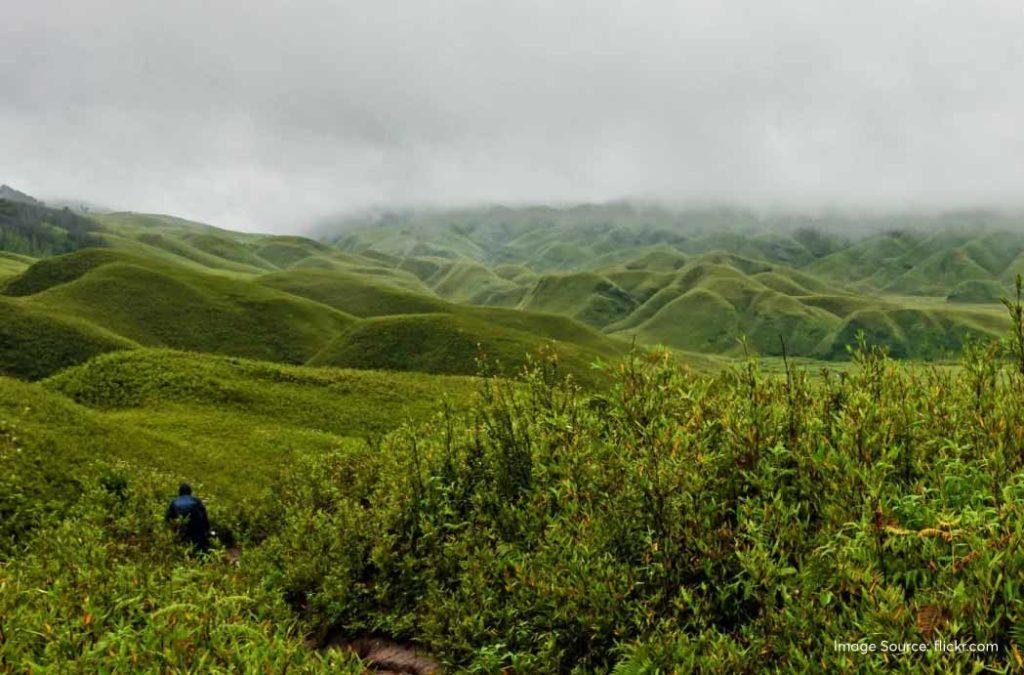
Imagine the feeling of being disconnected from the world around you. Dzuleke offers the perfect opportunity as there is limited mobile connection and locals are busy with their cultural practices. The world of technology is far away from the close-knit communities.
What’s surprising? You are certain to find homestays and other elements of hospitality by the villagers. Dzuleke Eco-tourism Board and TATA Trust have made efforts to provide tourists with a serene getaway from the hustle and bustle. As you jam in the rural tourism of Khonoma and witness the bliss of simplistic living, there’s nothing that can bring more joy to your journey in Nagaland!
Homestay – Tuseu Homestay
Average Cost – INR 700 Onwards (Per Person)
3. Khonoma Nature Conservation and Tragopan Sanctuary
You are surely going to be shocked to unravel the facts and community’s dedication in Khonoma. Khonoma Nature Conservation and Tragopan Sanctuary is a must-visit place to explore so much more than just trees and greenery.

This sanctuary dates back to 1998 when Tragopan (a species of bird) was highly found in the rainforest. Earlier, the Angamis practiced hunting and later when they realized the importance of nature conservation, that’s when they started making genuine efforts towards it. The entire rainforest covers a sprawling 123 square kilometres while only 25 square kilometres is dedicated to the sanctuary for tourists.
As you decide to explore animals and birds in the sanctuary, you might get lucky to spot Tragopan, spot-breasted Scimitar Babblers, Jungle Cats, Asian black bears and many more. The adventure is unlimited as the rainforest is home to more than 200 species of birds and 72 mammals! Locals here take care of the rainforest and also provide guided tours at affordable prices.
Rural Tourism: Your Guide to Authentic Village Lifestyle in India
4. Mountain Japfü
Can you hear the silence of nature? Oh yes, we are talking about the chirping of birds, the aroma of fresh air and literally no one around you with their mobile phones taking pictures. That’s exactly the scene at the top of Mount Japfu which is one of the best tourist attractions near Khonoma Village.

No, it is not simply about taking your trekking pole and climbing heights. Mount Japfu is the second highest peak in Nagaland and the trail is tougher than you think. It is located at an altitude of 3048 meters giving a breathtaking view from the top. Most thrill seekers love to take the trekking expedition as a challenge in the journey.
The trail to the top takes you through thick bushes and dense shrubs. Moreover, it takes approximately 5 hours to reach the top. Guess what? You’re about to see the tallest Rhododendron tree in the world with a height of 20 meters. It is also mentioned in the Guinness Book of Records. The top of the peak indeed justifies all the hard work with jaw-dropping views of the valley clubbed with the immense joy of doing something out of the box!
5. Angami Morung
Morungs are popular structures in Khonoma and are found all over the state of Nagaland. You are certain to learn a lot about the Angami tribes and their sheer dedication to the traditional work. Morungs serve as the learning centre for young males who get an opportunity to learn from the elder members of their community.
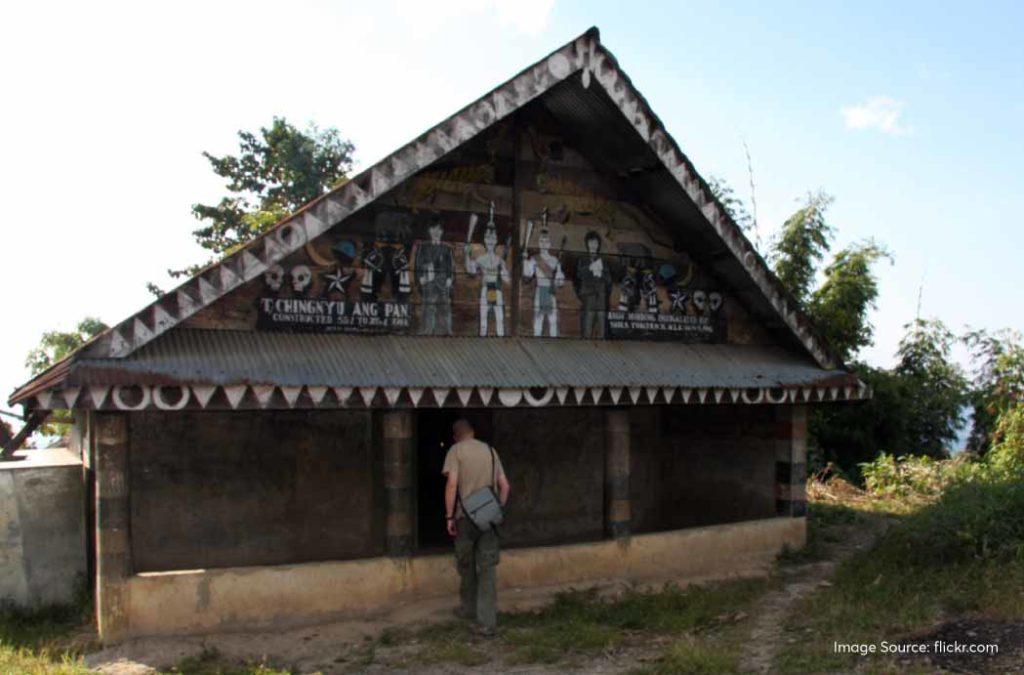
Morungs also have a special purpose apart from teaching. As you see Morungs, you can notice how they are constructed on a steep slope with ranging heights. Due to the altitude, the elder members and young males try to protect the village from unexpected dangers including an attack or a raid.
It is best to watch these Morungs and the handicrafts as a means of understanding their culture. The wooden structure, interiors and thoughtful creations inside the Morung certainly offer a glimpse of the artistic intelligence of the native people.
Top 5 Magnificent Historic Places to Visit in North East India
6. Puliebadze, Jotsoma
Puliebadze is one the serene destinations just 30 minutes away from the Khonoma Village. Most tourists love to spend their time exploring the neighbouring locations of Khonoma and this is one of them! Puliebadze is basically a viewpoint offering a spectacular vision of Kohima and western Angami areas.
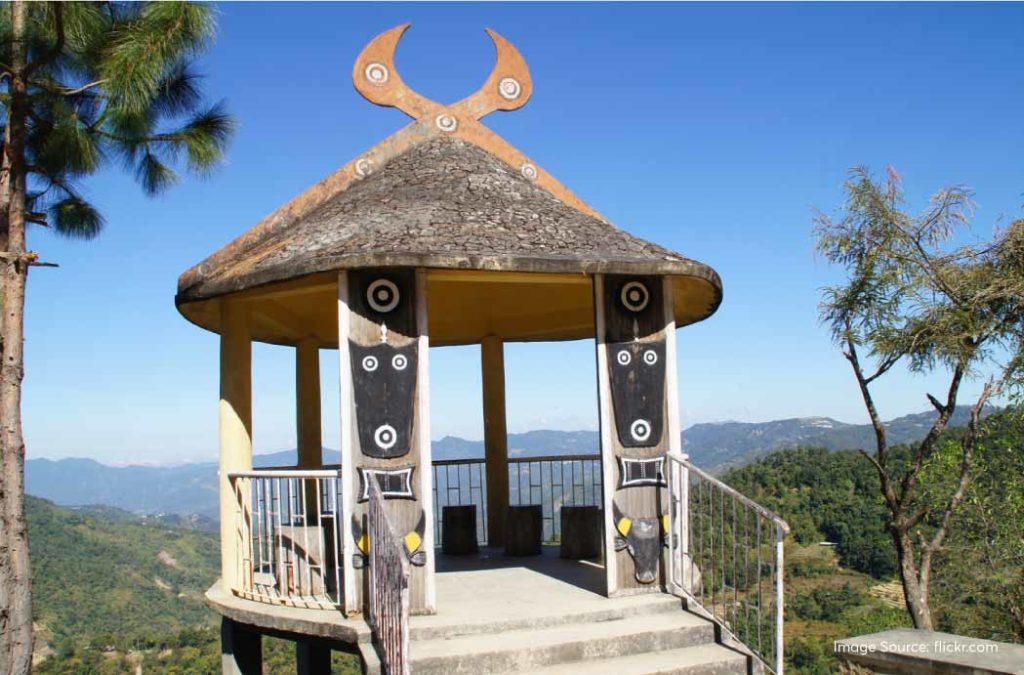
However, go here only if you are ready for a crazy adventure during your trip. It is a tricky trek and might also invite leeches and insects during the monsoon season. However, the dry season is recommended to enjoy the best views from the top. It is indeed surreal to watch nature lapping itself in the hills of Nagaland.
7. Khwehou
You cannot find this place on maps or even on the internet this easily. The thing with Khonoma is that many tourists travel for the experience and might not necessarily explore the names in the Naga script. Khwehou is an important location in the Khonoma village itself. Khwehou is a huge assembly ground for the communities here.
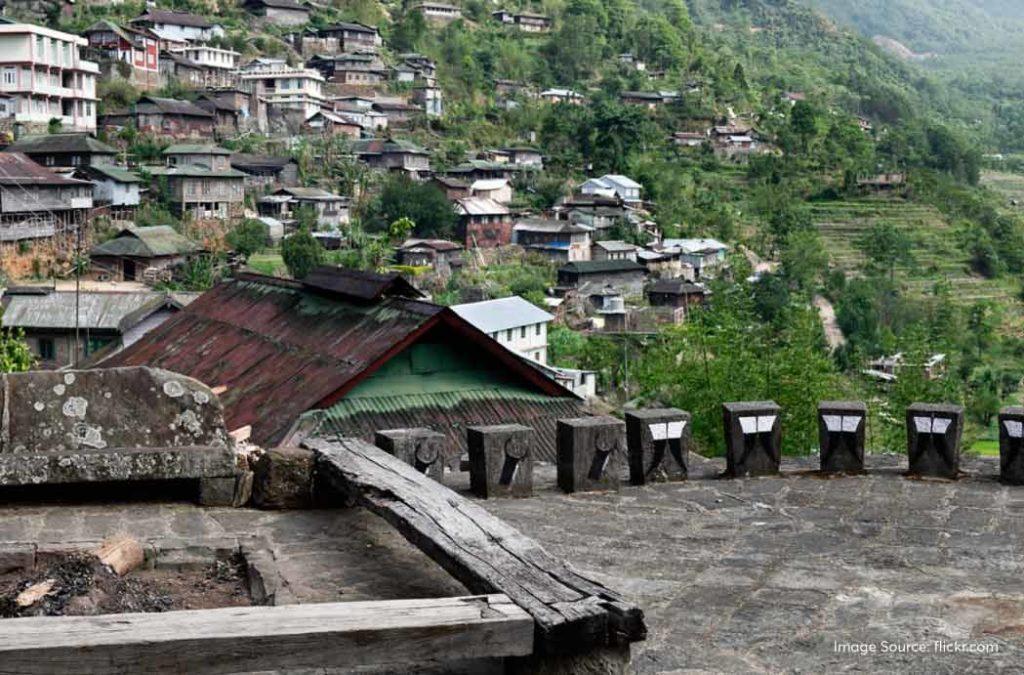
The sense of togetherness is extremely strong and hence, close-knit communities meet at Khwehou for gatherings and announcements. Interestingly, you cannot find seats here. There are slabs of stones where locals sit and attend the event. These slabs are called Dahu and tourists often take pictures at this unique location. The place turns into a paradise during festivals where Angamis gather and celebrate joy.
What’s Special about Khonoma Village?
1. Terrace Paddy Cultivation
Witnessing the lush green layers of cultivation is indeed surreal in Khonoma. Terrace Paddy Cultivation is one of the popular ways of farming and locals are highly dependent on agricultural activities for their bread and butter.
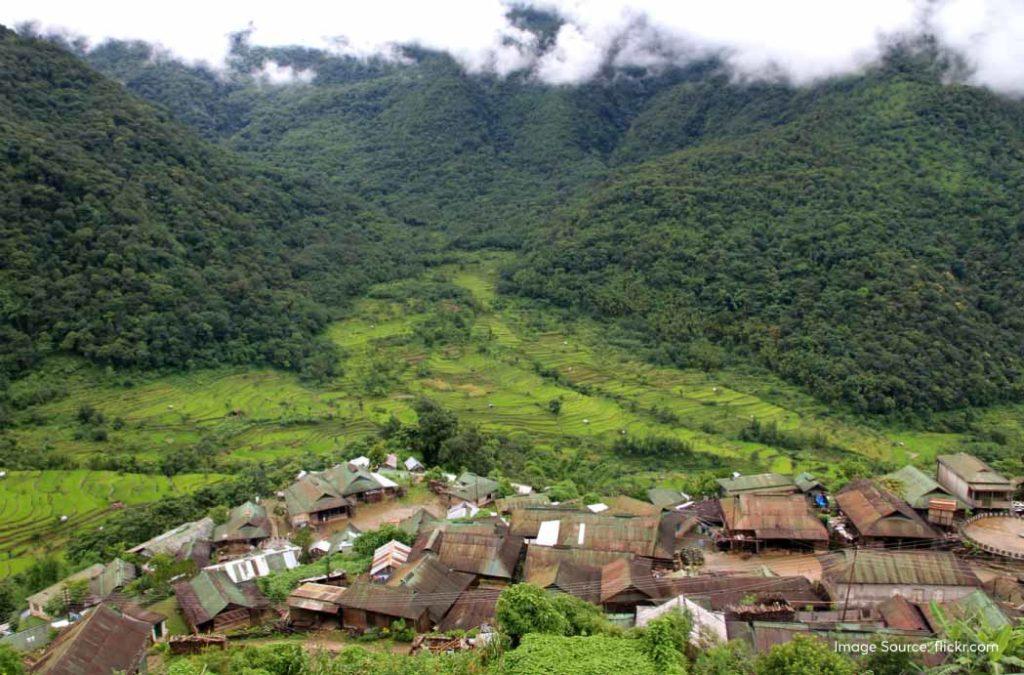
This mesmerizing site is a beauty to behold as each layer receives enough water for rice cultivation. Angamis are renowned for terrace cultivation and that’s how the entire village is involved in this.
2. Shifting Cultivation
Though shifting cultivation is difficult in the modern world, it is one of the sustainable ways of living in Khonoma. Basically, the Angamis cultivate crops on a piece of land until it is fertile.
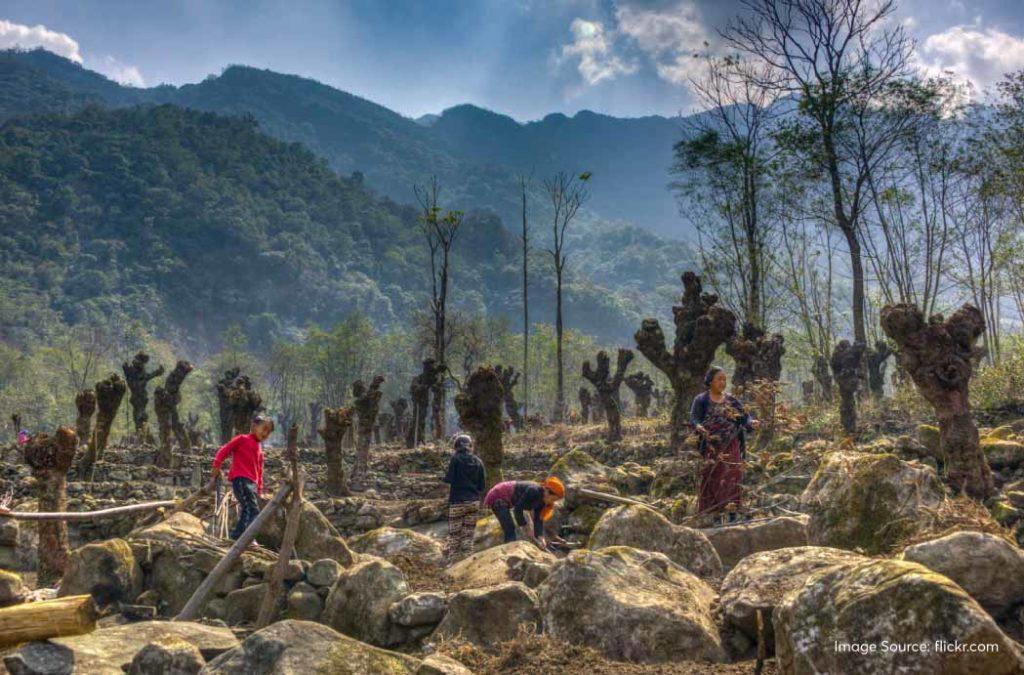
After which they burn the land and let it regenerate naturally. During the time of regeneration, they shift the cultivation to another piece of land. It is interesting to watch and also wonder how well they allow nature to take its time!
3. Asia’s First Green Village
Imagine stepping into Asia’s First Green Village for all the green reasons! Khonoma is well known across the world for its lush greenery and sustainable practices. To add to the list, it has naturally awe-striking landscapes elevating the beauty of this place.
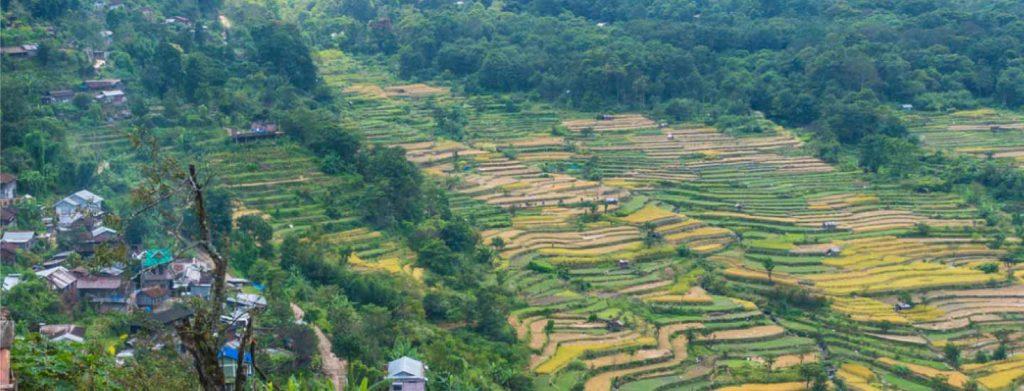
Right from the clothing of tribal communities, cultivation practices and terraced paddy, you can notice genuine efforts towards the conservation of nature. Moreover, locals promote eco-tourism and take the responsibility of guided tours without any particular guide as well.
4. Heritage Village Walk
When in Khonoma Village, you cannot miss the special heritage walk. While you might not know many things about the place, this walk lets you dive into the secrets of living and culture here.
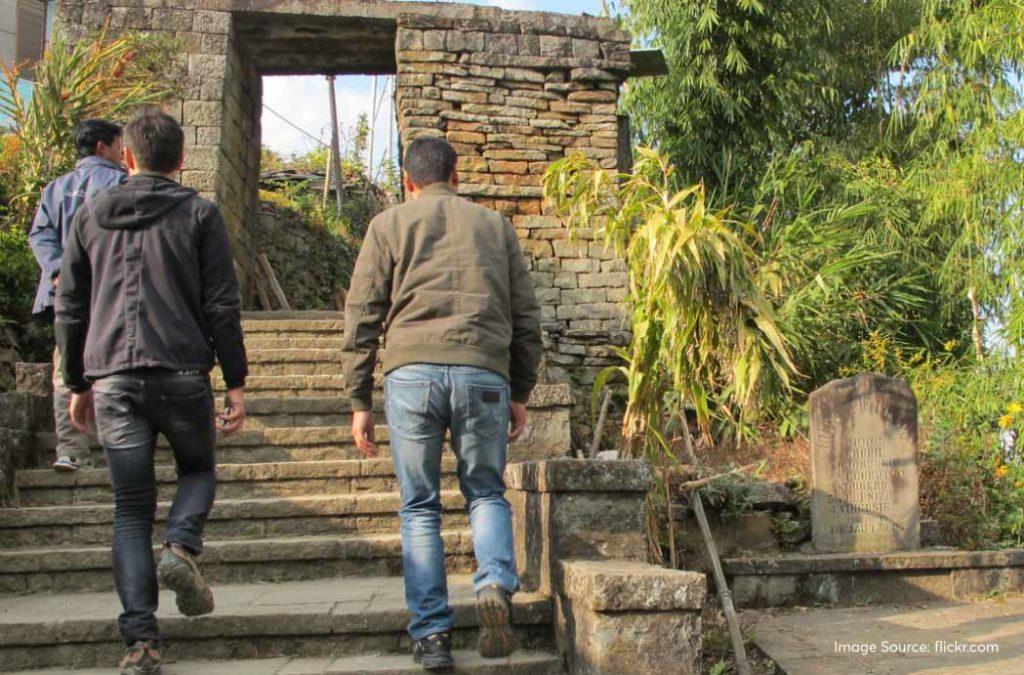
A heritage walk in the village takes you through traditionally constructed houses. As you interact with locals, you also get to explore their cuisine, history and craftsmanship. You are certain to come across various monoliths and historic sites that have stories stored in their paths.
Heritage Walks: Exploring the Legacy of the Country’s Past
5. Traditional Shopping
Did you think you would return home without a perfect souvenir for your loved ones? That’s certainly not the case in Khonoma. While the village does not have any particular store, a lot can be found in the Angami houses. Angamis are skilled at handwork and you can find a variety of vibrant shawls with intricate designs.
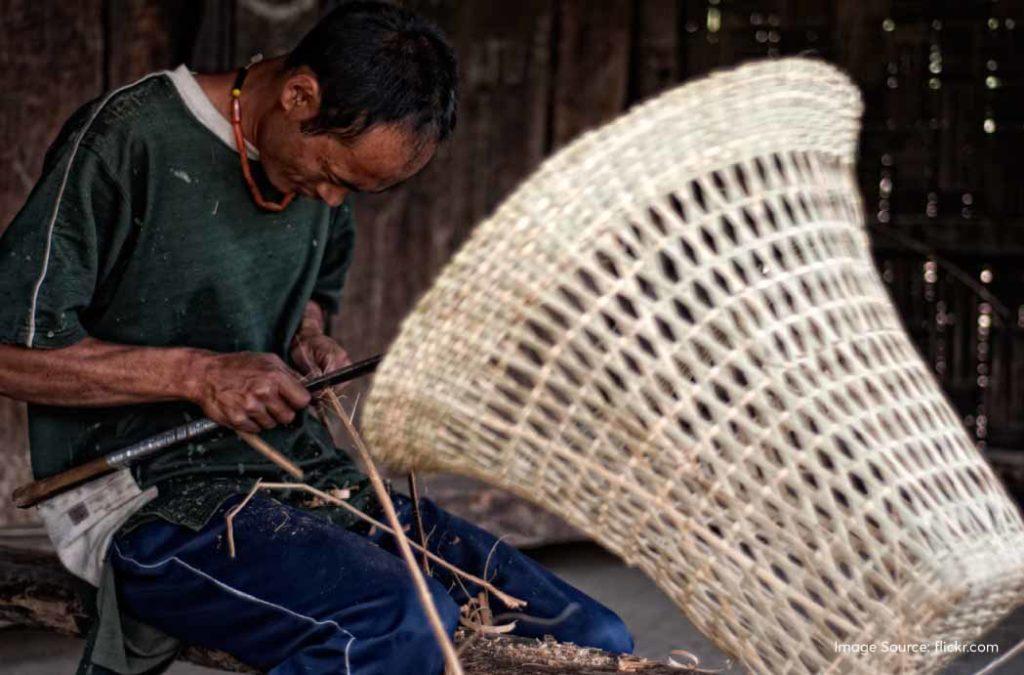
Along with this, many wooden items including bowls, decorative art and utensils are available here. Right from locally grown spices, and bamboo baskets to traditional Naga jewelry, you can browse through the traditional heritage of Khonoma pretty well.
6. Coexistence of Life and Death
Strange to know, however, Khonoma Village is all about living with the dead too. Not in a real sense obviously. Villagers follow traditional Tribal burial practices which also replicate the Egyptian system of offering beer, rice, food or other elements to the dead person.
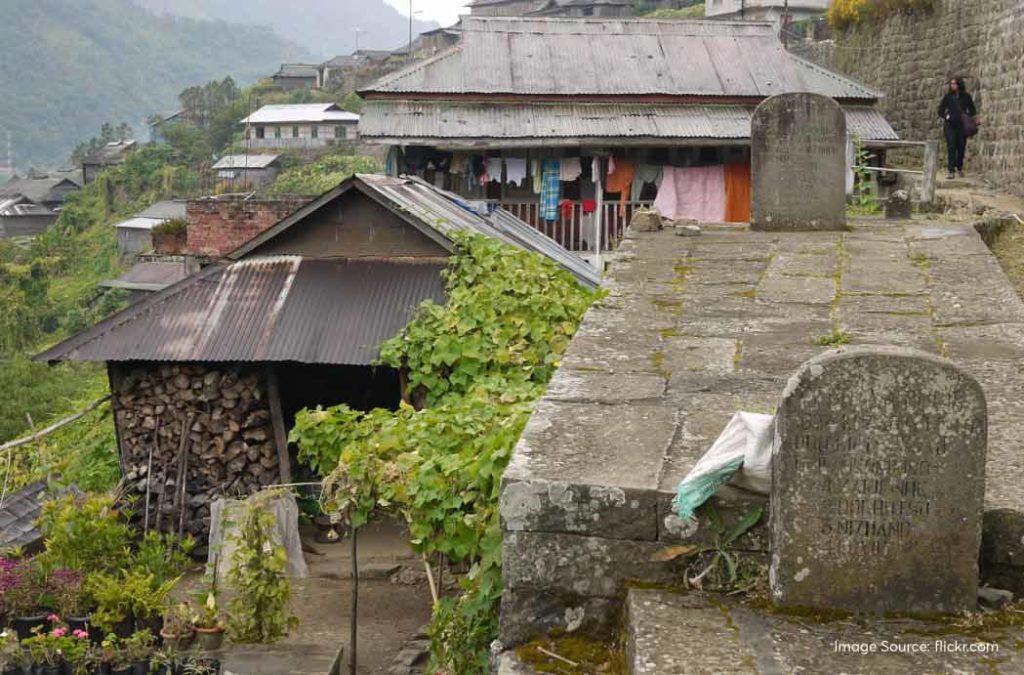
Angamis believe that ancestors transition into another form and are always near them hence, various festivals and traditions include such dances and prayers. When a departed soul is bid the last goodbye with music and dance depending on the customs. Families might also use their personal graveyard so you know, their ancestors actually live near to them.
7. People and their thoughts
People in Khonoma are sure to touch your heart with their amazing hospitality and conservative efforts. People here respect nature and often take the necessary steps to avoid damaging the environment.
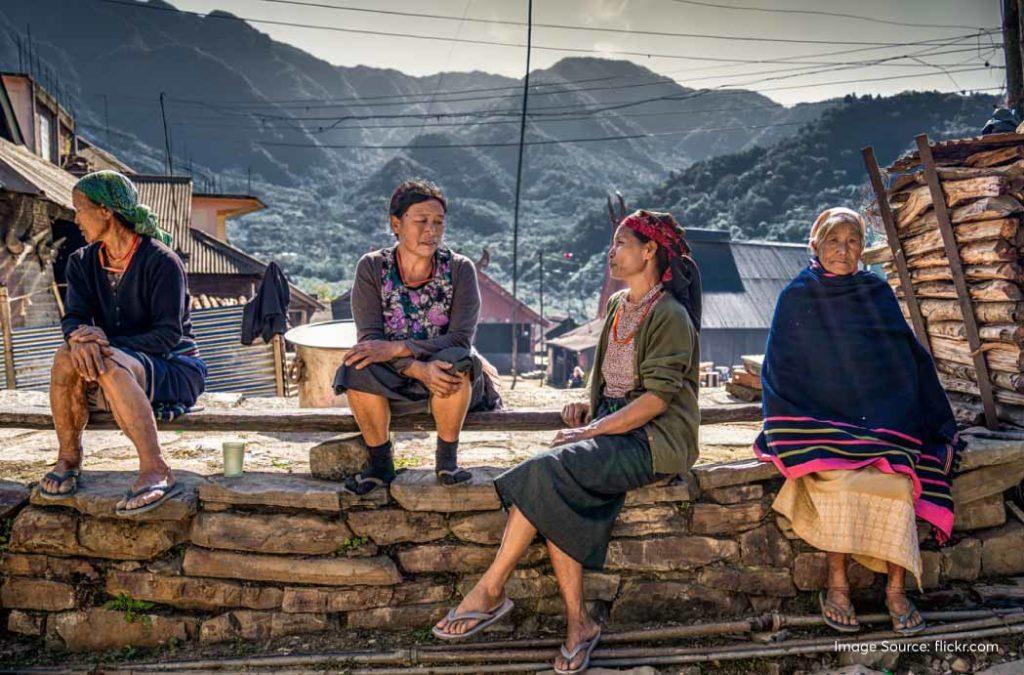
Moreover, they promote a sustainable lifestyle with homestays and simplistic living. They are also deeply rooted in their traditional practices making Angamis one of the distinct tribal groups of India. Also, they serve palatable home-cooked meals.
8. Flora and Fauna
People in Khonoma constantly romance with nature, meaning they love what they have in their village. You can spot so many different species of plants and flowers as you walk through the dense forests.
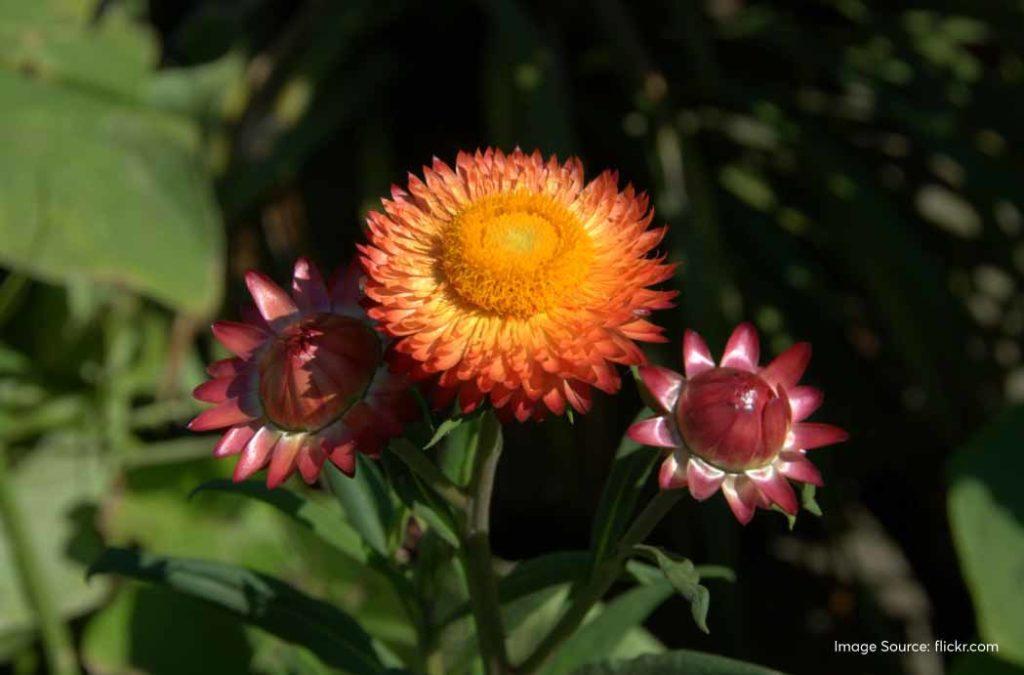
Additionally, the village is best known for preserving Hornbill (a bird), Barking Deer and Hoolock Gibbon. You can definitely opt for a birdwatching time here.
Best Time to Visit Khonoma
Perched on the top of Naga Hills, Khonoma enjoys a subtropical climate. The weather is generally comfortable during winters and summers however, the monsoon invites many insects in the regions. The best time to visit Khonoma is from October to April.
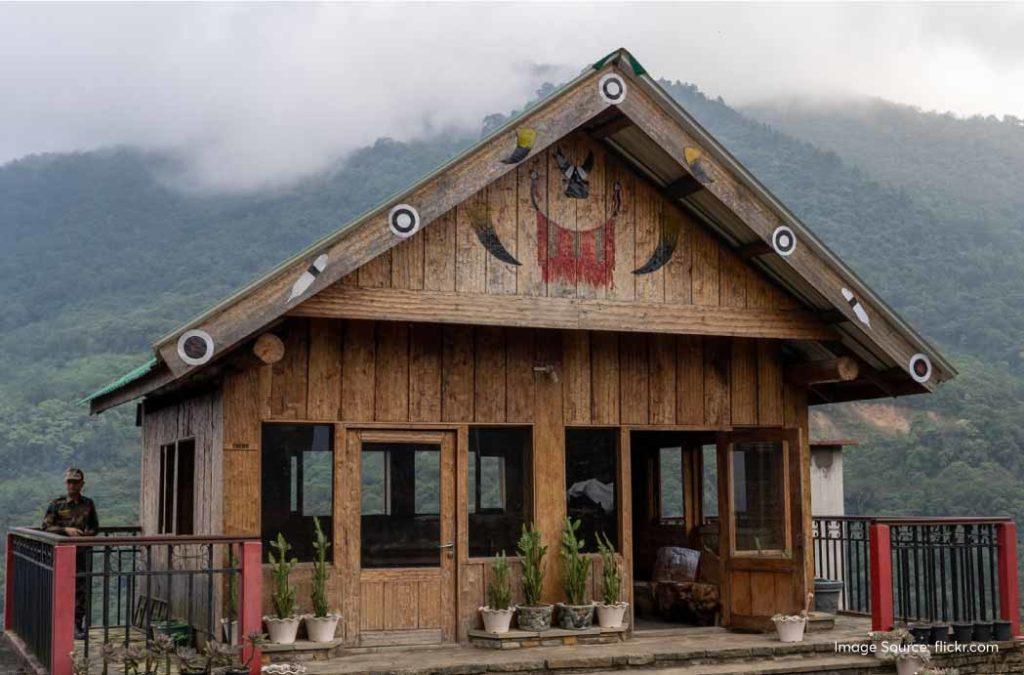
October marks the onset of the winter season and you might also get to witness snow during December depending on the climate. It is best to check the weather forecast before planning your trip as the weather remains unpredictable due to climate change.
How to Reach Khonoma?
Khonoma is nestled in the far away land of Nagaland which has less connectivity with the rest of the country. However, you can still conveniently travel here.
By Air:
Dimapur Airport is the nearest airport to Khonoma Village with flights running from major Indian cities. It is 74 Km from the village and you need to then take the bus or a cab to further reach here.
By Railway:
Dimapur Railway Station is the nearest, however, it is not very well connected. You can reach Guwahati railway station and book a direct train to Dimapur. It is 78.8 Km from here. You can take the bus or a cab.
By Road:
Roadways are well connected to Khonoma and you can easily opt for a road journey. However, the condition of roads varies depending on the season.
Where to Stay in Khonoma?
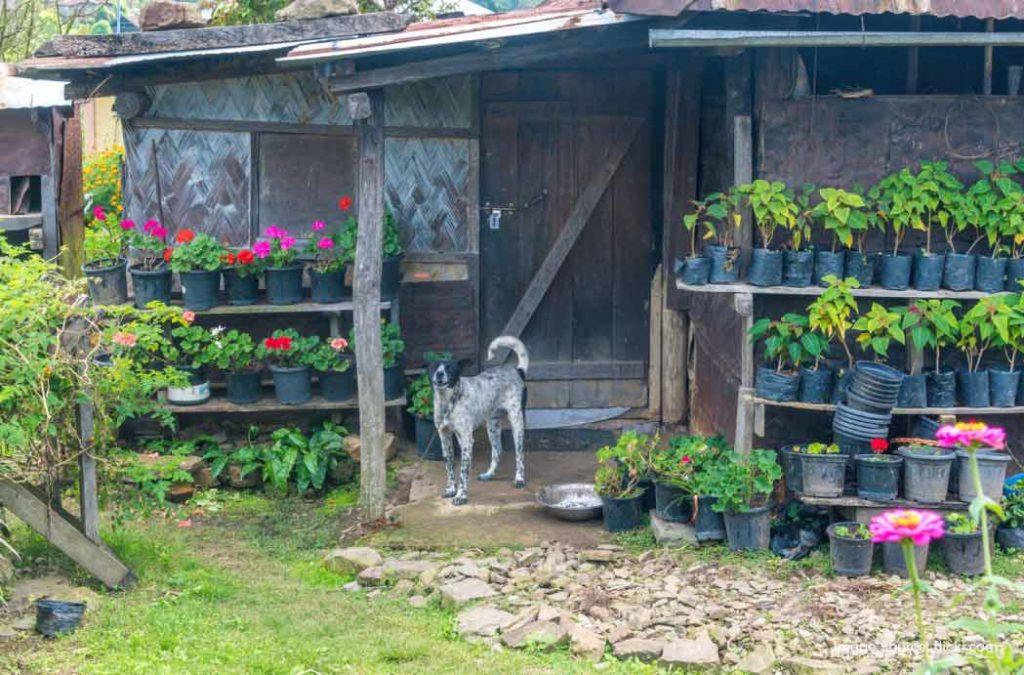
Khonoma is not the same as Kohima and you might get confused with the hotels or cottages you find on the web. Khonoma is a small village where the best places to stay are homestays. There are a few homestays registered with the government to give you an authentic experience. Moreover, these homestays offer lovely views of the village and delicious food. Popular places include Tuseu Homestay, Hills View Cottage and Dovipie Inn.
What to Eat in Khonoma?
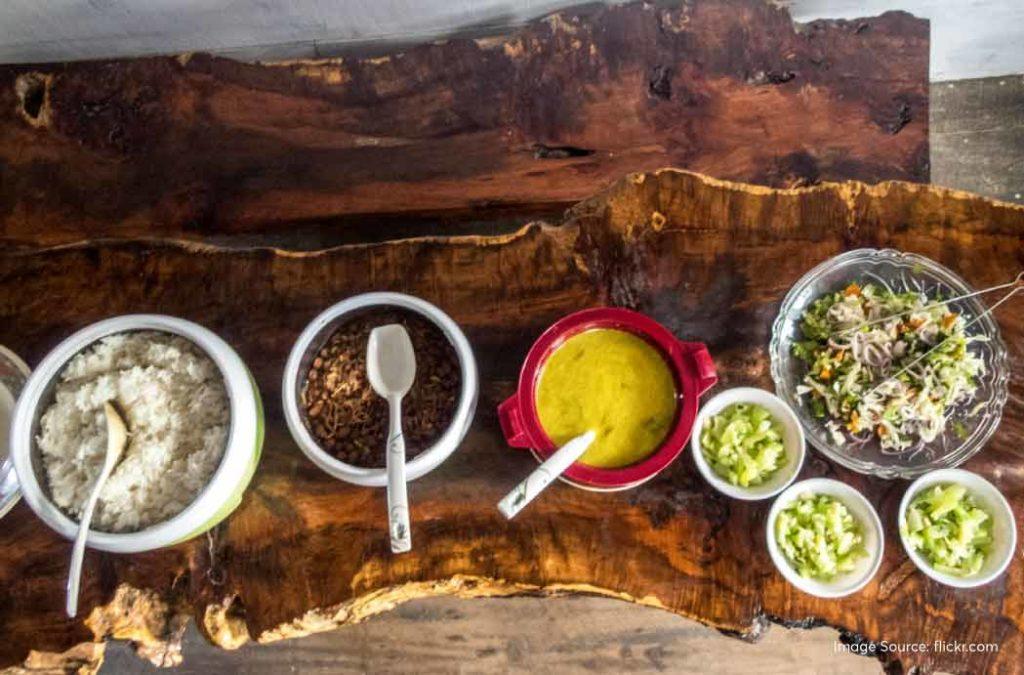
Khonoma village is surrounded by lovely locks who source their food and cook in their homes. You are unlikely to find huge food joints in the village. An average meal at the homestay costs anywhere between INR 100 to INR 200 making it an affordable deal. Moreover, you can visit the UKU Cafe which serves noodles, tea and other local dishes. Most of the dishes in the cafe are sourced from their own farms and made organically.
Khonoma truly inspires you to get out of your comfort zone and experience the bliss of staying in the Naga Hills. As you immerse yourself in the beauty and culture of Angamis, all you know is how big the world is and how small your worries are!








